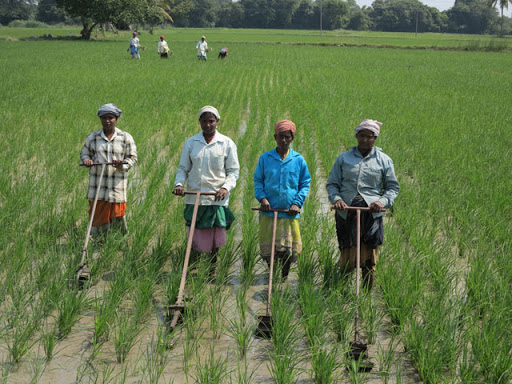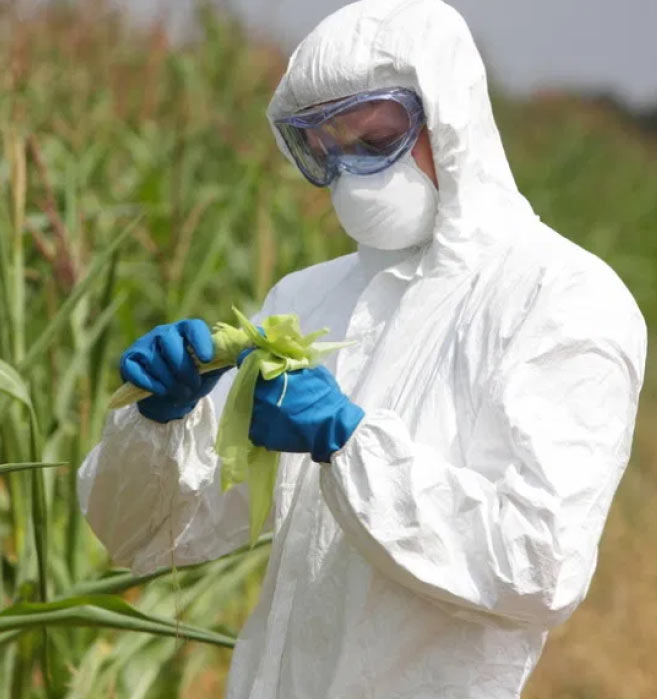
Need for integrated weed management approaches to control weeds
Weeds are a barrier for plants to gain nutrition and are responsible for degrading the native eco-systems as they compete with crops for all the inputs and reduce productivity. They are one of the major constraints to plant production across the globe and account for around 32% crop loss. In India alone the losses due to weeds accounted for around INR 80,000 crore in 20182. Advances in agriculture also have direct and indirect effects on weed control. With the newer approaches for weed control being introduced to tackle the evolving agricultural practices, the market size of weed control which was around INR 206 crore in 2018, is expected to witness a CAGR of 3.5% by 2025. Currently, herbicides are the major crop protection chemicals that are being used for controlling weeds. Although herbicides do not harm the crops, are cost-effective, easy to apply and fruitful in controlling weeds, with fewer herbicides with distinctive and different modes of action available in the market and their extensive use has led to a rise in incidences of herbicide-resistant weed populations. There is an urgent need for a viable solution to resolve the menace caused by weeds.
Currently, there are three potential ways being explored for handling weeds which includes:
Herbicides: Current herbicide research is focusing on the discovery of new target sites, better physicochemical properties and different modes of action. Bio-herbicides based on plant extracts and microorganisms is also catching lot of attention. Although there is huge potential for the use of nano-herbicides for targeted weed control, their commercial viability is yet to be reviewed as these air-borne nanoparticles may pose environmental health risks both for plants and humans.
Mechanical weed management: Mechanical weeders will not only help mitigate the labour availability issue which is encountered in manual weeding but will also save time and effort for the farmers. They are effective but not very popular in India. Mechanical weeding is primarily done using either manual weeder, animal-drawn weeder or power-operated weeder. Amongst these, although the power operated weeders perform better, there is a scope for improvement in the battery operated and multi-row weeders. Overcoming the shortcomings of the current mechanical weeders and using newer technologies, the new market trends in mechanical weeders use precision agriculture, camera along with spray mechanism, robotic machines with motors, sensors and microcontrollers to detect weeds based on row per column, etc. The popular technologies such as Blue River Technology (BRT) which has been developed for agricultural machines that utilize machine learning to distinguish between weeds and plants as the machines drive over fields based on the size, shape and colour. These machines will prevent chemical overuse by spraying at the exact spot. In India some companies have developed and deployed robotic weeders and supply them under services model to farmers due to their higher costs3, 4.
Genomic approaches: Genetic engineering is also being applied as a potential new technology for silencing the key weed genes or by genetically engineering the crops to enable them to kill the weeds reducing the need for herbicides5.  The herbicide tolerant crops currently in the market show little evidence of enhanced invasiveness compared to the non-GM counterparts. The possibility of discovery of new modes of action for herbicides through genetic engineering provides additional options for manipulating herbicide selectivity and creating entirely novel approaches to weed management which is promising. But the regulatory hurdles and acceptance of genetically modified product look bleak across all countries. There is extensive research ongoing for using RNA interference (RNAi) applied as a spray w hich makes the weeds more susceptible to herbicides. But there are few hurdles blocking the commercial implementation of RNAi herbicides including technical problems such as formulating RNA to achieve efficient uptake into the target plant as a sprayed product, development of methods for economical large-scale production of RNAs, development of resistance to RNAi herbicides and regulatory issues. Many leading crop protection companies are developing or acquiring RNAi delivery technology to overcome the glyphosate resistant weeds6.
The herbicide tolerant crops currently in the market show little evidence of enhanced invasiveness compared to the non-GM counterparts. The possibility of discovery of new modes of action for herbicides through genetic engineering provides additional options for manipulating herbicide selectivity and creating entirely novel approaches to weed management which is promising. But the regulatory hurdles and acceptance of genetically modified product look bleak across all countries. There is extensive research ongoing for using RNA interference (RNAi) applied as a spray w hich makes the weeds more susceptible to herbicides. But there are few hurdles blocking the commercial implementation of RNAi herbicides including technical problems such as formulating RNA to achieve efficient uptake into the target plant as a sprayed product, development of methods for economical large-scale production of RNAs, development of resistance to RNAi herbicides and regulatory issues. Many leading crop protection companies are developing or acquiring RNAi delivery technology to overcome the glyphosate resistant weeds6.
Application of “Omics” technology which incorporates genomics, proteomics, transcriptomics, and metabolomics to understand invasiveness of weeds which will enable the development of long term integrated approach are being researched and developed. Although these new technologies are promising, there is a long way before they become commercially available.
As several weed species are obstinate and are still difficult to control and with the vast number of serious weed problems rising across the world, only one method for weed management cannot be relied upon and the weed control technologies must constantly evolve before evolution and adaption by weeds. Also, applying technologies such as precision agriculture and automation opens multiple possibilities for efficient weed management, through chemical or mechanical mechanisms. To achieve the goal of meeting the food requirements, an integrated weed management approach as applied for pests must be explored and adopted through deeper understanding of weed science and concentrated efforts towards quick modelling, testing and commercialization by major private sector players for effective weed control.
Author

Connect with Authors at: E-mail agribusiness@sathguru.com
 Grow Beyond
Grow Beyond 

